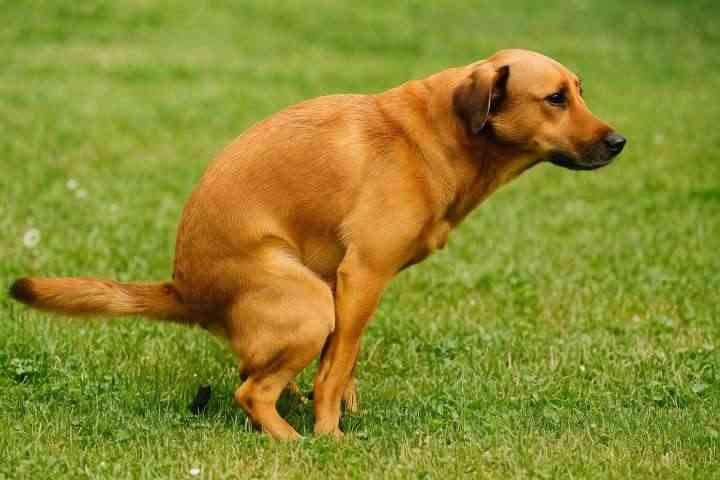As unpleasant as it sounds, your dog’s poop can tell you a lot about their health. Color, consistency, shape, and frequency all give important clues about digestion, diet, hydration, and possible illnesses.
In this vet-approved guide, we’ll help you understand what healthy dog poop looks like, what changes to watch for, and when it’s time to call your vet.
💩 What Does Normal Dog Poop Look Like?
Follow the guidelines on the dog food bag based on your puppy’s current weight and age. Adjust based on:
- Chocolate brown in color
- Firm and log-shaped, with slight moisture
- Easy to pick up, not sticky or crumbly
- Passed 1–3 times a day, depending on diet and routine
- Free of mucus, blood, worms, or undigested food
✅ If your dog’s poop consistently meets these standards, it’s usually a sign of good digestive health.
📊 The Dog Poop Color Chart: What Each Color Might Mean
Color | What It May Indicate |
|---|---|
Brown (normal) | Healthy digestion and diet |
Green | Eating grass, GI upset, or gallbladder issue |
Yellow or Orange | Possible liver issue, bile imbalance, or food sensitivity |
Black or Tarry | Bleeding in the upper GI tract (emergency) |
Red Streaks | Blood from lower GI or rectum—possible inflammation or injury |
Gray or Greasy | Poor fat digestion; may signal pancreas or gallbladder issues |
White Specks | Tapeworms or undigested bone |
❗ Unusual colors that persist for more than 24–48 hours should be reported to your vet.
🧱 Poop Consistency: The “Four Cs”
- Color – Should be brown
- Consistency – Firm but not hard
- Coating – No mucus, slime, or blood
- Contents – No visible worms, fur, or objects
Poop Consistency Scale (1 to 7)
Score | Description | Meaning |
|---|---|---|
1 | Hard, dry pellets | Dehydration, constipation |
2–3 | Firm, log-shaped (ideal) | Healthy |
4 | Soft but holds shape | Mild digestive upset or diet change |
5–6 | Loose, shapeless | Diarrhea, malabsorption |
7 | Watery, liquid | Acute diarrhea—needs attention |
🪱 Should You Worry About Worms or Parasites?
Yes. Visible signs include:
- Rice-like grains (tapeworms)
- Long, thin spaghetti-like worms (roundworms)
- Bloody diarrhea or mucus-covered stool
👉 Regular deworming and stool checks (especially in puppies or shelter dogs) are important for prevention.
🍽️ How Diet Affects Dog Poop
Changes in poop are often related to diet:
- Sudden food change → loose stool or gas
- Low-quality food → inconsistent poop, more odor
- Too much fat → greasy, soft stool
- High fiber → larger, firmer stools
- New treats or table scraps → unpredictable results
Tip: Transition to new food gradually over 7–10 days to prevent GI upset.
💦 Frequency: How Often Should Your Dog Poop?
- Puppies: 3–5 times per day
- Adults: 1–3 times per day
- Seniors: Often less frequent, but should remain regular
A sudden increase or decrease in frequency may signal:
- Diet change
- Dehydration
- Illness or GI infection
- Obstruction (especially if straining with little output)
⚠️ When to Call the Vet
Seek veterinary help if you notice:
- Poop that’s black, tarry, or bloody
- Ongoing diarrhea (lasting more than 2 days)
- Hard, dry stools and straining
- Signs of worms, mucus, or odd objects
- Sudden poop accidents in house-trained dogs
- Accompanying symptoms like vomiting, lethargy, or loss of appetite
🧼 Bonus Tips for Responsible Dog Poop Management
- Always pick up poop to prevent the spread of parasites and bacteria
- Use biodegradable poop bags
- Track your dog’s stool changes in a daily health log
- Schedule regular fecal exams (1–2 times/year)
Conclusion
Your dog’s poop is one of the best windows into their internal health. Knowing what’s normal—and what’s not—can help you spot issues early and keep your dog feeling their best.
Want a printable Dog Poop Color & Consistency Chart? Visit our Canine Health Tracker Hub for free downloads and wellness tools.

